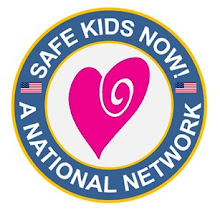America’s budget crisis and economic downturn has experts writing articles and wondering why crime has gone down. A former Los Angeles police chief gives credit to tracking, analyzing numbers and quick responses.
Richard Rosenfeld, a sociologist who studies crime trends states, "a remarkable decline." He suggests possible explanations include, extended benefits, food stamps and other government-driven economic stimulus "have cushioned and delayed for many people the big blows that come from a recession."
As a crime and violence prevention consultant for 36 years, I have seen citizen activists reduce crime but they are seldom acknowledged. When I got involved in 1969 to stop crime in my community, police were called “pigs” and citizen activists were called, “vigilantes” or “busy bodies.” Negative terms often slow down innovation. When citizen activists formed a volunteer countywide citizen’s crime prevention committee, the police chief’s association tried to block a state grant. Our request was granted only after a former police chief became a co-leader with our administrator. The chief was dropped after the 2nd year when the police saw citizens willing to work with them.
As one of six citizen activists, I was the West County Coordinator and we met weekly to share what we learned. Over the next six years, coordinators organized 27 volunteer crime prevention committees in cities throughout our county. Committees worked with police in each city to reduce burglaries. Citizens soon discovered neighbors were stopping vandalism and destructive juvenile behavior. Neighbors also learned how to work together to stop drug dealers, prostitutes and predators. As volunteers became more knowledgeable, they reported a porn ring; illegal gambling and discovered child sex trafficking.
As the group evolved, we saw the need for training. The committee developed workshops on how to develop partnerships, build teamwork, facilitate a meeting, make a presentation, sell prevention and work with the media. In addition to organizing and supporting local committees, we created a resource list of films, pamphlets and flyers to help volunteers make presentations on shoplifting, rape, drugs, juvenile delinquency and senior power. Staff and volunteers developed a county newsletter. Every year crime prevention volunteers grew, and the committee sponsored events and an annual dinner recognizing our numerous citizen activists. Our staff of eight made a huge impact on our county.
The solution to crime and violence has never been police, elected politicians or government. They set policy and have an important role, however, crimes occur when families and neighbors are disconnected and youth feel no one cares. We saw citizens changing attitudes, restoring hope as they reduced fear and social isolation which fuels crime and violence.
Today the media, police and city leaders see the need for volunteers. However, crime prevention training is limited for many reasons. Leaders may not trust volunteers, don’t understand their critical role or may feel threatened. Some volunteers do a better job than paid employees. When citizens get involved they might discover fraud, corruption and learn that citizens are being misinformed.
To continue the decline in crime, every community must tap into our greatest national resource, our citizens. Americans must be involved at the neighborhood level to stop juvenile bad behavior. INVOLVEMENT creates healthy environments for youth before they take drugs, get pregnant, drop out of school or join gangs. Every citizen should be encouraged to:
1. Meet neighbors in the ten closest homes or apartments.
2. Help neighbors connect and get acquainted.
3. Exchange contact information.
4. Know the children, the elderly and the cars in the neighborhood.
5. Encourage everyone to write down descriptions, license numbers and report suspicious activities.
6. Keep neighbors informed about any crime or problems.
7. Designate a rotating neighborhood leader, if people are afraid to report crimes.
8. Create a list of skills and equipment neighbors are willing to share.
9. Designate a “safe house” or a “block parent” for youth.
10. Have an annual neighborhood social or block party.
The public needs to know that their involvement contributes to the mental, physical and spiritual health of the community. The threat of floods, earthquakes, fires, tornadoes and terrorism is a wake up call for citizens to get connected. Involved citizens don’t tolerate crime and often become mentors for children! It takes a network of support to help raise compassionate, responsible, disciplined children.
To focus on prevention we must promote involvement and reward citizen activists for their accomplishments! County and city leaders should consider a citizen countywide committee. All city employees should be encouraged to set examples by organizing and participating in their neighborhoods. Adults need to take charge of neighborhood safety so children can grow up in healthy, peaceful cities.
Crime has decreased because citizen activists are creating change! Americans will create more positive change if citizens are encouraged, involved, educated and trained to be citizen activists in every community.
“As soon as public service ceases to be the chief business of citizens, and they would rather serve with their money than with their persons, the State is not far for its fall.”
Jean Jacques Rousseau
The Social Contract 1762
Mann is a safety consultant and the author of 4 national crime prevention books. Her first book, “Alternative to Fear: Guidelines for safer neighborhoods (1975)", helped launch the national “Neighborhood Watch” program. You can contact her at: http://www.safekidsnow.com.
Wednesday, March 14, 2012
Subscribe to:
Posts (Atom)




